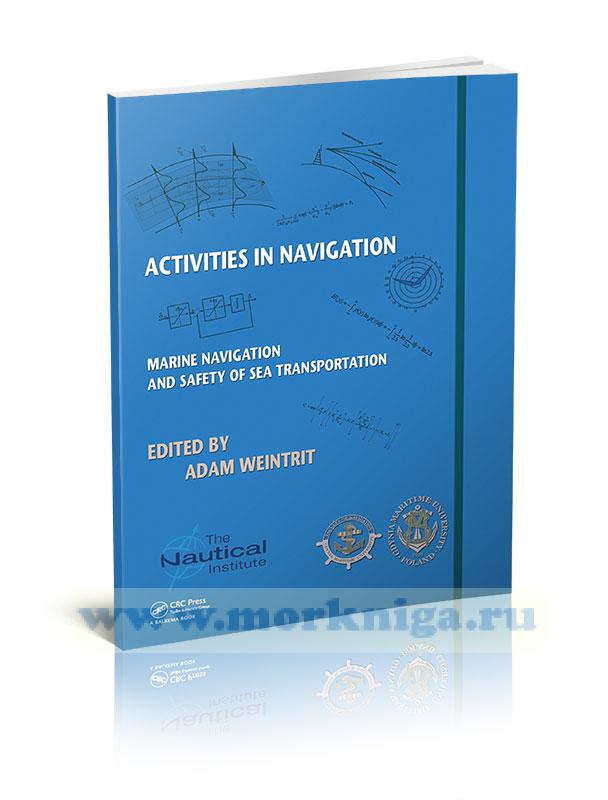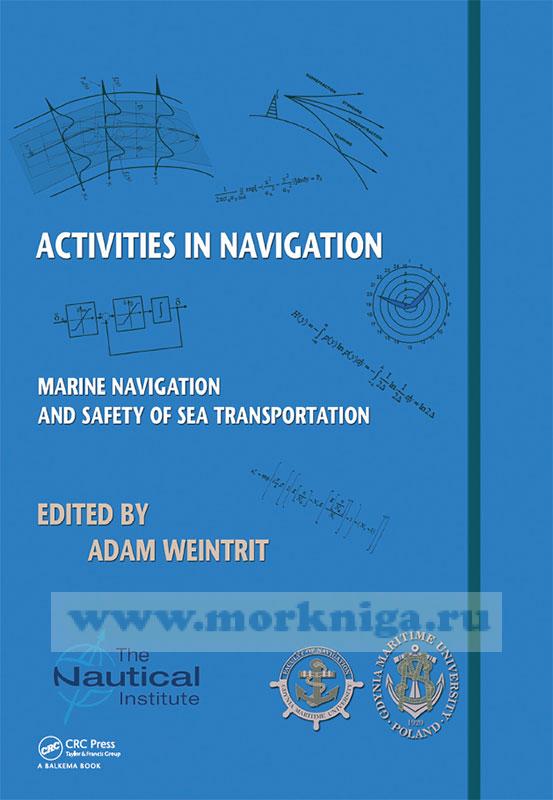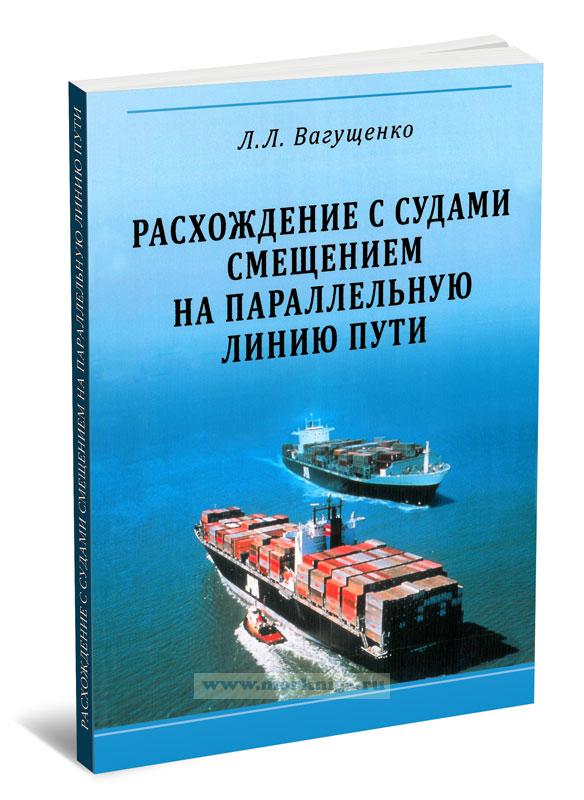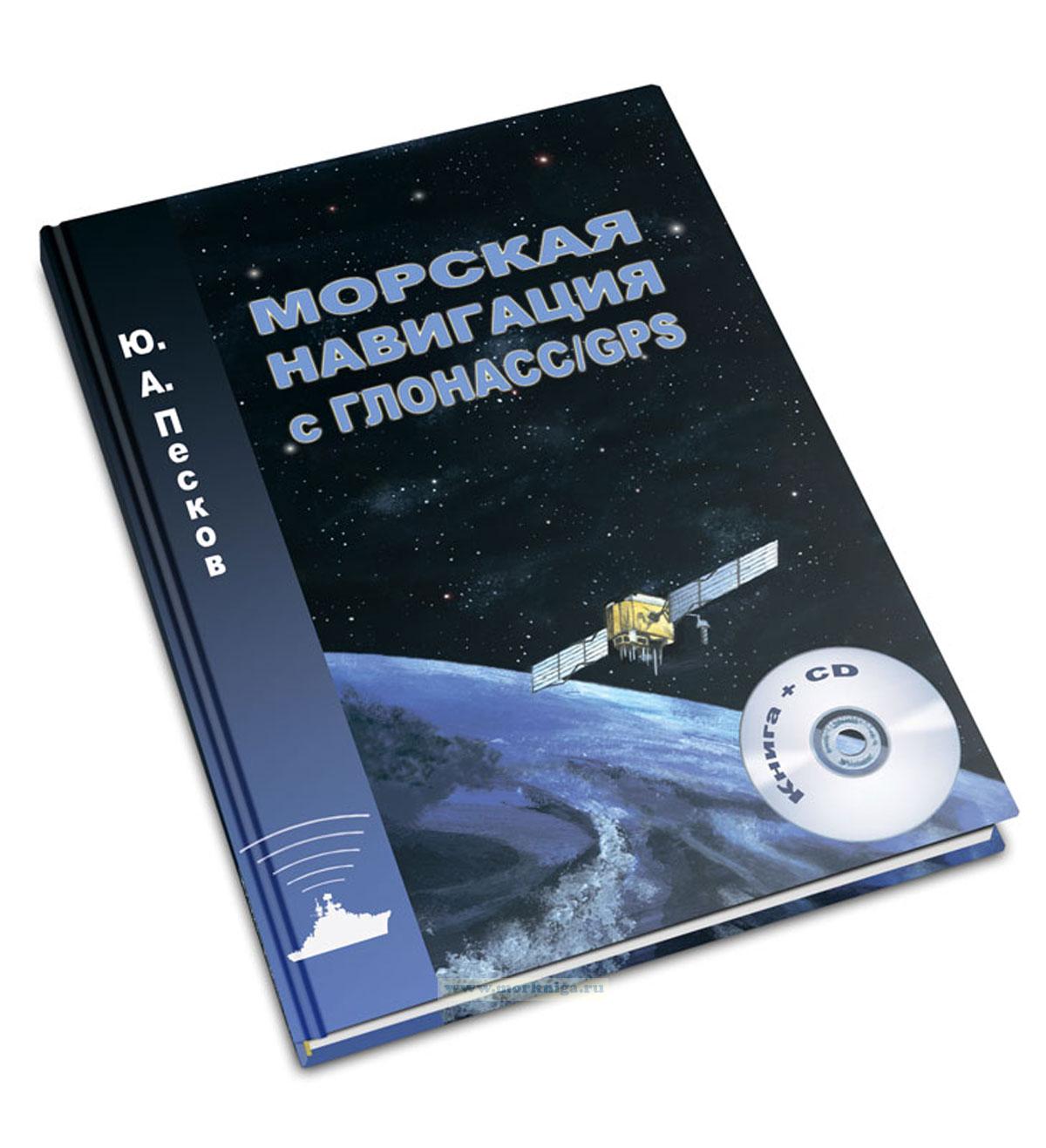Marine Navigation and Safety of Sea Transportation - Activities in Navigation. Морская навигация и безопасность морских перевозок - Деятельность в навигации
Издание на английском языке
The contents of the book are partitioned into seven separate chapters: Safety of navigation, Navigational Bridge Equipment, Automatic Identification System AIS, Route planning, Anti-collision and collision avoidance, GNSS - Global Navigation Satellite Systems, and Aviation. In each of them readers can find a few sub chapters. Sub chapters collected in the first chapter, titled "Safety of navigation", concerning conceptual foundation of safety of navigation, question of vessels safety ensuring in the emergency situations, safety of dynamic positioning, safety of offshore supply operations, risk evaluation model for management of navigation safety in an entire ship route area, identification of typical hazards and limitations to the commercial shipping safety, created by offshore activity and crew transfer high speed crafts, operating in the vicinity of the intensive traffic flow areas, physical characteristics of virtual aids to navigation, analysis and decision making for control of extreme situation of fishing vessels on the base dynamic model of catastrophe, and case study in flawed accident investigation as well as some results by real time simulation study.
Contents
List of reviewers
Activities in Navigation. Introduction
A. Weintrit
Chapter 1. Safety o f Navigation
1.1. Safety of Navigation - Conceptual Foundation
V.G. Torskiy, V.P. Topalov & M.V. Chesnokova
1.2. To the Question of Vessels Safety Ensuring in the Emergency Situations
E.P. Burakovskiy & P.E. Burakovskiy
1.3. Safety of Dynamic Positioning
R. Gabruk & M. Tsymbal
1.4. New Layout of Mrzezyno Port Entrance Design - Results by Real Time Simulation Study
A. Bqk & L. Gucma
1.5. Safety of Offshore Supply Operations
J. Pawelski
1.6. Risk Evaluation Model for Management of Navigation Safety in an Entire Ship Route Area
S. Hwang, E. Kobayashi, N. Wakabayashi & N. Im
1.7. The Identification of typical Hazards and Limitations to the Commercial Shipping Safety, Created by Offshore Activity and Crew Transfer High Speed Crafts, Operating in the Vicinity of the Intensive Traffic Flow Areas
G. Szyca
1.8. Physical Characteristics of Virtual Aids to Navigation
R.G. Wright &M. Baldauf
1.9. Analysis and Decision-making for Control of Extreme Situation of Fishing Vessels on the Base Dynamic Model of Catastrophe
E.P. Burakovskiy, Yu.I. Nechaev, P.E. Burakovskiy & V.P. Prokhnich
1.10. A Case Study in Flawed Accident Investigation
E. Doyle
Chapter 2. Navigational Bridge Equipment
2.1. Radar Detection in Duct Situations in Maritime Environment. The Vital Influence of the Radar Antenna Height
F X Hofele
2.2. Signal Processing Optimization in the FMCW Navigational Radars
V. Koshevyy & O. Pashenko
2.3. Autopilot Using the Nonlinear Inverse Ship Model
K. Kula
2.4. Reliability and Exploitation Analysis of Navigational System Consisting of ECDIS and ECDIS Back-up Systems
A. Weintrit, P. Dziula, M. Siergiejczyk & A. Rosinski
Chapter 3. Automatic Identification System (AIS)
3.1. An Analysis of Ship Behavior Induced by the Great East Japan Earthquake Tsunami Based on AIS
X. Liu, S. Shiotani & K. Sasa
3.2. Onboard AIS Reception Performance Advances for a Small Boat
K. Tokudome, Y. Arai, S. Okuda, A. Hori & H. Matsumoto
3.3. A Subject of Class B AIS for Small Trawler
H. Matsumoto & M. Furusho
3.4. Research on the Real Movement of Container Ship between Japan, China, and South Korea Using AIS Data
X. Gao, H. Makino & M. Furusho
3.5. Modeling of Observed Ship Domain in Coastal Sea Area Based on AIS Data
R. Miyake, J. Fukuto & K. Hasegawa
Chapter 4. Route Planning
4.1. Safe Ship Trajectory Planning Based on the Ant Algorithm - the Development of the Method
A. Lazarowska
4.2. Ship Evolutionary Trajectory Planning Method with Application of Polynomial Interpolation
P. Kolendo & R. Smierzchalski
4.3. Supply and Demand of Transit Cargo Along the Northern Sea Route
T. Kiiski
4.4. Northern Labyrinths as Navigation Network Elements
A.N. Paranina & R. Paranin
4.5. Ship’s Route Planning in Ice Infested. Areas of Northem Svalbard Following Ice Charts Made by Remote Sensing
Methods
T. Pastusiak
Chapter 5. Anti-Collision and Collision Avoidance
5.1. Apprisal of the Coordinability of the Vessels for Collision Avoidance Maneuvers by Course Alteration
A. Volkov, E. Pyatakov & A. Yakushev
5.2. Comparison of Anti-collision Game Trajectories of Ship in Good and Restricted Visibility at Sea
J. Lisowski
5.3. Concretization of the Concept "Nearly Reciprocal Course" in Rule 14 of Colreg-72
VM. Bukaty
5.4. Visualization of Holes and Relationships Between Holes and Latent Conditions
K. Fukuoka
Chapter 6. Global Navigation Satellite System (GNSS)
6.1. Nominal Unique BeiDou Satellite Constellation, its Advantages and Disadvantages
J. Januszewski
6.2. Experiments with Reception of IRNSS Satellite Navigation Signals in the S and C Frequency Bands
J. Svaton & F. Vejrazka
6.3. Evaluation of a Low Cost Tactical Grade MEMS IMU for Maritime Navigation
R. Ziebold, M. Romanovas & L. Lanca
Chapter 7. Aviation
7.1. Use of Passive Surveillance Systems in Aviation
M. Dzunda, N. Kotianova, K. Holota & P. Zak
7.2. The Concept of the SWIM System in Air Traffic Management
K. Krzykowska, M. Siergiejczyk & A. Rosinski


 Расхождение с судами смещением на параллельную линию пути
Расхождение с судами смещением на параллельную линию пути  Компьютерная астронавигация. Теоретические основы. Примеры решения задач. Расчет точности
Компьютерная астронавигация. Теоретические основы. Примеры решения задач. Расчет точности  Морская навигация с ГЛОНАСС/GPS+CD
Морская навигация с ГЛОНАСС/GPS+CD